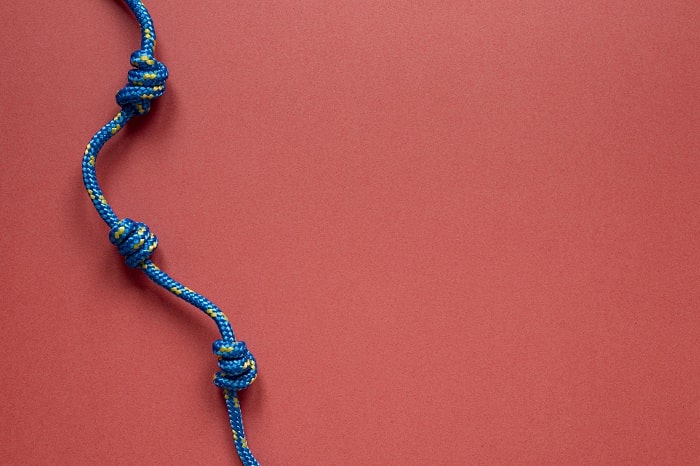Have you ever watched someone effortlessly twirl a rope, their movements so fluid and precise it seems like a form of art? That mesmerizing activity is known as rope flow, and it’s more than just a visually stunning exercise – it’s a powerful tool for building strength, improving coordination, and enhancing mental focus.
This article will discuss the foundational skills necessary to start using rope flow. Then, we’ll share expert tips to help you improve. You’ll also get practical advice on fitting rope flow into your daily routine. Get ready to be inspired and see how this practice can change your body and mind.
What is Rope Flow?
Rope flow is an exercise in which you move a rope in fluid, circular motions. It originated from martial arts and has grown popular due to its benefits. This practice improves fitness, coordination, and mental focus. It’s different from jump rope because it doesn’t involve jumping. Instead, you move the rope in various patterns.
Getting Started: Essential Equipment
To begin your rope flow journey, having the right equipment is crucial. Here are the essentials you need to get started:
● Choosing the Right Rope
Select a rope flow rope that suits your height and skill level. Beginners should opt for a heavier rope. It moves slower, making it easier to control. Advanced practitioners might prefer a lighter rope for faster movements.
You can consider buying these ropes online through sites that are specifically designed for this art. This allows you to access a variety of ranges and options that are often not available in local shops.
● Comfortable Clothing
Wear comfortable, flexible clothing. Ensure you have enough room to move freely. Avoid loose clothing that might get tangled in the rope.
● Proper Footwear
Choose shoes with good support and a flat sole. This helps with balance and prevents injury.
Basic Skills
Now, start with the fundamental techniques. The overhand Figure 8 is the first move to learn. Hold the rope handles and swing the rope over and around your body in a figure 8 pattern. Practice this until it feels natural.
Next, learn the Underhand Figure 8. Swing the rope under and around your body in the same pattern. Then, move on to the Drag Step. Step forward with one foot and drag the other foot behind while swinging the rope. These moves form the foundation of rope flow. Watch video tutorials or look at images to see these moves in action.
Intermediate Skills
Once you’re comfortable with the basics, try intermediate techniques. The Side Swing involves swinging the rope to one side of your body, then the other. The Dragon Roll is a circular motion where you swing the rope around your head and down in front of you. The Snake Swipe mimics the movement of a snake, with the rope flowing side to side.
Practice transitioning between these moves. Drills can help improve your fluidity and coordination. For example, try smoothly switching from the Overhand Figure 8 to the Side Swing.
Advanced Techniques
Advanced techniques require more practice. The Dragon Roll Weave combines the Dragon Roll with a weaving motion. The Double Under Figure 8 involves swinging the rope under your body twice in one jump. The Rope Flow 360 is a full rotation move where you turn your body 360 degrees while swinging the rope.
These moves are challenging but rewarding. They also look impressive. Combine different moves into sequences to create your flow. Focus on perfecting your style and timing.
Training Routines
Structured training routines help you progress. For beginners, start with short sessions focusing on basic moves. For example, spend 5 minutes on the Overhand Figure 8, then 5 minutes on the Underhand Figure 8.
As you improve, the duration and complexity increase. Intermediate routines can include 10 minutes of basic skills and 10 minutes of intermediate moves. Advanced routines might involve 15 minutes of a mix of all techniques, ending with a 5-minute freestyle session. Creating your routines keeps practice interesting and tailored to your goals.
Common Challenges and Solutions
Learning rope flow comes with challenges. Common issues include getting tangled, losing rhythm, or feeling uncoordinated. Practice patience and stay persistent.
● If you get tangled, slow down and focus on smooth, controlled movements.
● Losing rhythm often happens when you rush. Slow down and practice each move separately before combining them.
● Feeling uncoordinated is normal for beginners. Break down each move into smaller parts and master each one. Injury prevention is crucial.
Remember, warm up before practicing and cool down afterward. Stretching helps maintain flexibility and prevent injuries.
Conclusion
Rope flow is a rewarding activity that improves fitness, coordination, and mental focus. Start with the basics and gradually advance to more complex moves. Regular practice and patience are essential. Use this guide to help you on your journey. Remember, everyone progresses at their own pace. Enjoy the process, and keep flowing!








